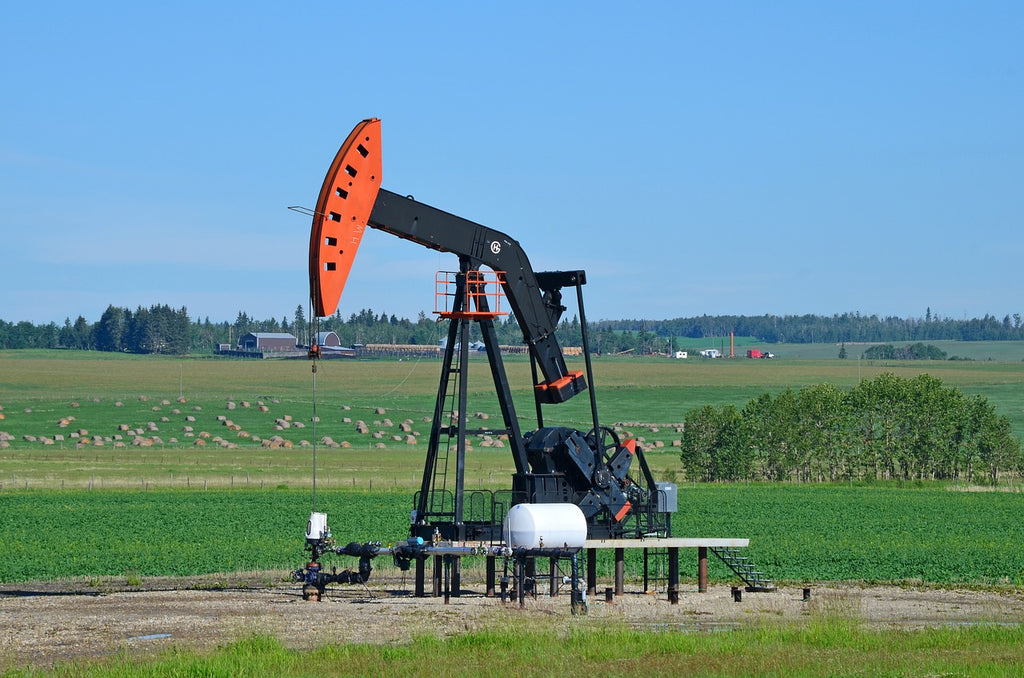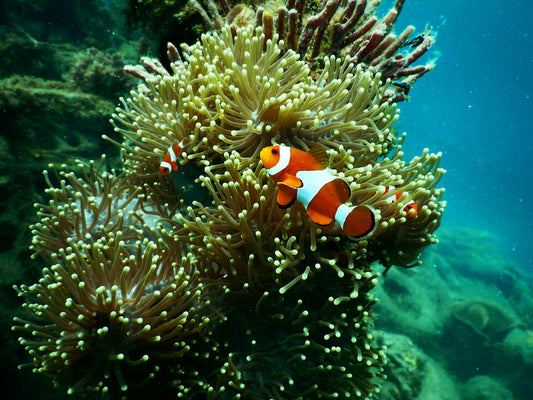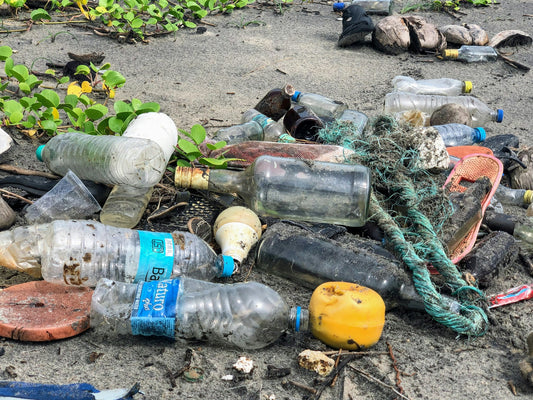Share
Plastics have long become an essential component of products and packaging. The material has flooded the world in storm due to its durability, lightweight, and affordability.
However, under all such benefits lies a long list of adverse effects. Plastic causes concerning pollution and environmental damage. For starters, you should know that plastic takes up to 1,000 years to decompose.
You might think that plastic is decomposed when it’s burned. However, this is not true, because burning only converts large chunks of plastic into microplastics and generates very toxic gas. In the end that's even more harmful to all living organisms.
The question here arises: does plastic pollution cause global warming? Well, You may be surprised to read that in fact plastic pollution is a direct contributor to climate change.
This article will discuss how plastic pollution is directly related to global warming and what can be done to combat this problem.
Understanding the Lifecycle of Plastic Pollution
To understand the contribution of plastic towards global warming, first, we need to know the lifecycle of how plastic is produced and where it usually ends up.
Extraction and Transportation of Plastics

When people think about plastic pollution, they mainly focus on where plastic are disposed of. However, the problem starts with the extraction and transportation of plastics.
The building blocks of plastics are oil, gas, and coal. Over time, natural gas and oil can be extracted from the ground by the fracking process.
These fossil fuels' exhaustion, transfer, and combustion produce carbon emissions.
A report from the Center for International Environmental Law (CIEL) estimates that 12.5 to 13.5 million metric tons of carbon dioxide is also emitted as a result of the transportation and extraction of natural gas in the U.S. to make feedstocks for plastics in the country.
That alone is equivalent of the yearly emissions from 2.7 million cars.
Furthermore, the process of land disturbance for mining leads to greenhouse gas emissions related to extraction.
In the past years, at least 7.4 million acres of U.S. land have been lost for oil and gas developments.
That is the area of 3 Yellowstone National Parks exploited for oil and gas extraction. Around 14% of that oil and gas is extracted for plastic and related petrochemicals industries.
More Emissions Through Refining and Manufacturing

The extraction of fossil fuels is followed by petrochemical production, which helps to convert them into the basis of plastic, like ethylene and propylene.
Greenhouse gases are emitted during the various stages of a petrochemical plant’s operations, e.g., cracking, distillation, and polymerization.
"Monomers, Polymerization... what the heck are you talking about?"
Monomers are single molecules that are derived from oil and gas for plastic production. Think of them as lego blocks. For the production of polyethylene for example the monomer is called ethylene, which is a molecule made of carbon and hydrogen. During the process of polymerization, monomers are linked together to form long chains through heat or chemical reactions. Think of sticking together the lego blocks.
Such emissions, mainly by carbon dioxide (CO2), methane (CH4), and nitrous oxide (N2O), are the main reason for the global increase in temperature.
Once monomers are put together, polymerization is the result. During the process, long chains of plastics are formed by linking up these monomers.
However, the process is different depending on the types of polymers. The thermal and pressure conditions, which are typically high, sustain the polymerization processes.
This results in energy inputs that are also high, which in turn require the combustion of fossil fuels for heat and powering of the manufacturing plants.
The CIEL report presents a case study that took place in the community. Around the world, carbon dioxide emissions from ethylene production are expected to increase by 34% from 2015 to 2030.
Carbon dioxide is a greenhouse gas that directly leads to the greenhouse effect that warms world temperature.
Global Warming Caused by Ocean Plastic

If you're reading this, you are likely aware of the terrible effects of plastic pollution in oceans.
But did you also know that plastics that end up in oceans are a source of causing global warming? These plastics reduce the albedo effect, which contributes to rising water temperatures.
We know that most plastics are dark in color, resulting in the absorption of solar radiation instead of the reflection as the ocean would naturally do. This absorption leads to water warming, similar to how it feels like to wear dark clothes in the sun.
Indirect Greenhouse Gas Emissions
The UCL Institute for Sustainable Heritage in London found that the volatile organic compounds (VOCs) emitted from plastic materials have a relation to climate change. VOCs are gases that easily evaporate at low heat, for example if plastic is exposed to sunlight.
The investigation shows that VOCs may react with nitrogen gases in the atmospheric environment, and this reaction may produce ozone, a powerful greenhouse gas and a main cause of global warming.
VOCs can covertly react with other pollutants and form secondary organic aerosols, essential to Earth's climate balance as they either absorb or reflect the incoming solar radiation.
This phenomenon affects the complicated chemistry of the atmosphere and, ultimately, the air circulation at a global level.
The Specific Role of Single-Use Plastics in Global Warming

The University of Colorado has recently given a clear image of how single-use plastics contribute to global warming.
- First of all, single-use plastics are made from oil, and the extraction and production of these plastics still emit large amounts of greenhouse gases that are the leading cause of climate change.
- The extraction and transportation of fossil fuels from their resource mines to plastic factories produces 1.5-12.5 million metric tons of greenhouse gases.
- Tearing down the tree population for oil drilling and building pipelines is only one activity that led to the release of more than 1.6 billion metric tons of carbon dioxide into the atmosphere.
- Besides the diminished tree cover, the soil would affect its capability to absorb carbon dioxide.
- An additional 184 to 213 million metric tons of greenhouse gases are released from the processing of plastics annually.
- Among the largest sources of methane emissions are landfills, with more than 15% occupied by single-use plastics. More plastic disposal in landfills will increase the area covered by the landfills and contribute to these emissions.
- The Pacific Ocean has an enormous floating mass of plastic the size of Texas that continues to grow even faster and absorbs heat that warms the ocean.
- As per an OECD report from 2019, 1.8 billion tonnes of greenhouse gas (GHG) emissions were generated by plastics. This 3.4% of the global emissions were released only from their production and transformation, mostly related to the conversion of fossil fuels. Adding all parts of the lifecycle, this number is lkely closer to 5%.
- Another OECD report estimates that in 2060, the emissions from the plastics lifecycle will be more than two-fold to the figure of 4.3 billion tonnes of Greenhouse Gas (GHG) emissions.
How to Reduce Global Warming Caused by Plastic Pollution?
Let's move on to what we need to do to control plastic pollution. You'll see it's not that hard. Here are some simple steps we can all take to make a big difference:
Cut Down on Plastic:
Choose reusable items like a reusable water bottle instead of using single-use items. Avoid purchasing bottled water often. Make an effort to use your bag when going to a shop instead of using a plastic one.
Say No to Single-Use Plastics:
Support initiatives for the non-use of plastic. Support entities moving from plastic and advocate for waste reduction to be effective. Embrace plastic bans, as they are an important vehicle to cut down plastic consumption on a big scale.
Dispose of Plastic Wisely:
Ensure that your plastic waste ends up at the facility where it is supposed to go. If you are able, recycing it is a good choice. Please, dear people, don’t litter. Check out how to recycle plastic here.
Support Plastic-Free Ideas:
Support initiatives for the non-use of plastic. This implies supporting entities trying to replace plastic with other environmentally sustainable materials and advocating for all those trying to reduce the amount of waste. In upcoming elections, check the candidates' programs for programs against pollution and support the sustainable change with your vote.
Teach Others and Educate Yourself:
By reading this article, you are already on the right track. Let's talk about plastic pollution, what makes it wrong, and what can be done to fix it. Through these combined efforts, we could make it a powerful tool to attract more people.
Vote with Your Wallet:
In the end, consumers have the power to vote with their wallet. If consumers demand sustainable products and refuse buying polluting single-use plastics, corporations must follow. Bring your reusable cup if you get a coffee and demand sustainable take out, if the businesses want to keep you as a customer.
We hope you enjoyed this article. If you want to read more like this, make sure to check out our Blog and follow us on Instagram.
For more info on how specific items contribute to pollution and global warming, check out these articles and more in our category "How much do ... contribute to pollution?":
If you are interested in truly sustainable products, check out our Shop.
Did you know that plastic contributes to global warming? Leave a comment below and engage in the discussion!








